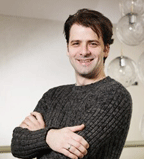Quantum theory: foundations and applications

“In recent work, developed over the course of 2006, I have addressed the problem of how to identify features of the unwanted interactions that arise in the context of controlling large quantum systems, in particular for the purposes of quantum computing.” The method provides a diagnostic that can be applied by experimentalists to determine which properties of the ‘quantum noise’ limit their control. The mathematics of the method is based on identifying symmetry groups that isolates particular types of errors. The method is to apply random transformations drawn from the symmetry group followed by prescribed measurements. “After the experiment,” explains Professor Emerson, “we obtain estimates of certain parameters of the quantum noise that will help specify modifications to improve the experimental method, and, in eventual applications, will help optimize the choice of quantum error correcting code.”
On the more theoretical side, Professor Emerson hopes to gain a better understanding of which properties of quantum theory truly distinguish it from the classical theory of mechanics. One problem is to identify the conditions under which a quantum system enjoys advantages for computation. “The ultimate goal is to understand the broader scope of applications and phenomena where quantum theory leads to something surprising, and perhaps even shed some light on how to develop a complete theory of reality.”
University of Waterloo Mathematics, Annual Report 2006